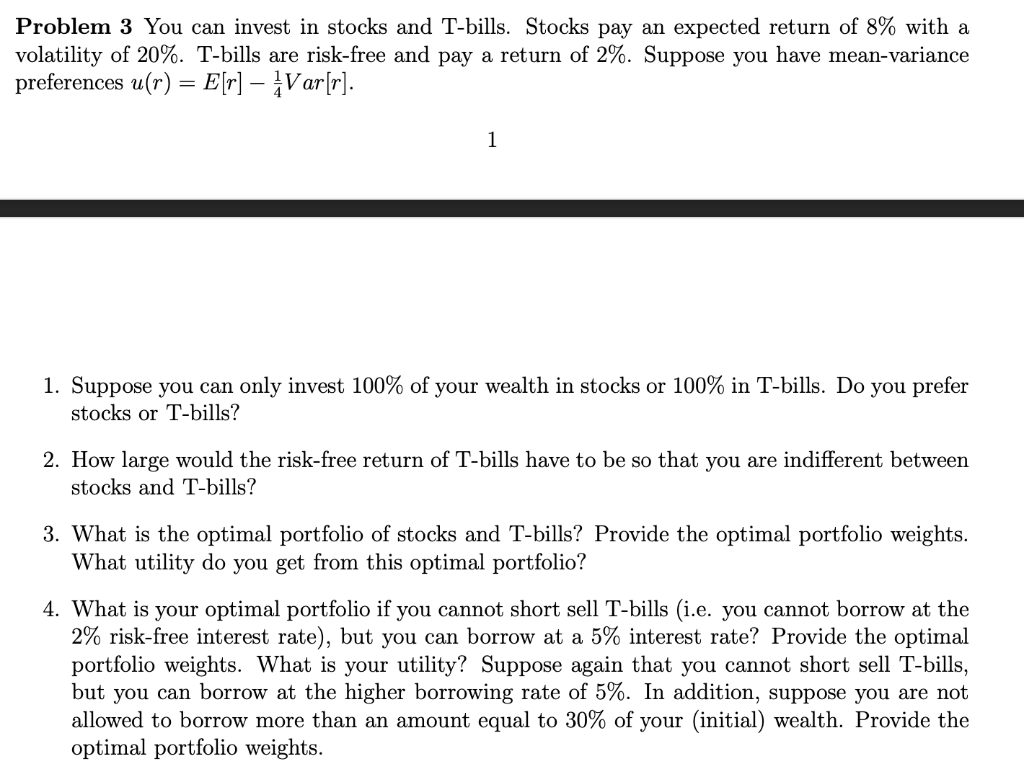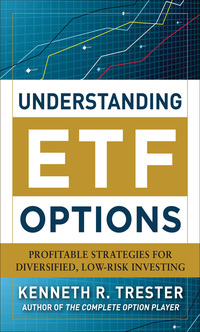Question
You can invest in stocks and T-bills. Stocks pay an expected return of 8% with a volatility of 20%. T-bills are risk-free and pay a

You can invest in stocks and T-bills. Stocks pay an expected return of 8% with a volatility of 20%. T-bills are risk-free and pay a return of 2%. Suppose you have mean-variance preferences u(r) = E[r] 1/4 * Var[r].
-
Suppose you can only invest 100% of your wealth in stocks or 100% in T-bills. Do you prefer stocks or T-bills?
-
How large would the risk-free return of T-bills have to be so that you are indifferent between stocks and T-bills?
-
What is the optimal portfolio of stocks and T-bills? Provide the optimal portfolio weights. What utility do you get from this optimal portfolio?
-
What is your optimal portfolio if you cannot short sell T-bills (i.e. you cannot borrow at the 2% risk-free interest rate), but you can borrow at a 5% interest rate? Provide the optimal portfolio weights. What is your utility? Suppose again that you cannot short sell T-bills, but you can borrow at the higher borrowing rate of 5%. In addition, suppose you are not allowed to borrow more than an amount equal to 30% of your (initial) wealth. Provide the optimal portfolio weights.
Step by Step Solution
There are 3 Steps involved in it
Step: 1

Get Instant Access to Expert-Tailored Solutions
See step-by-step solutions with expert insights and AI powered tools for academic success
Step: 2

Step: 3

Ace Your Homework with AI
Get the answers you need in no time with our AI-driven, step-by-step assistance
Get Started


